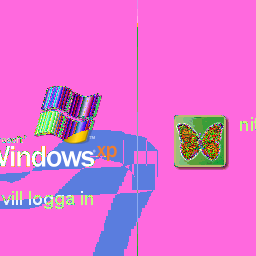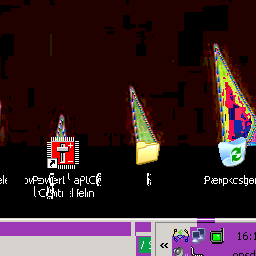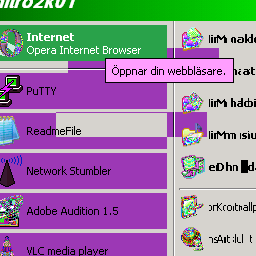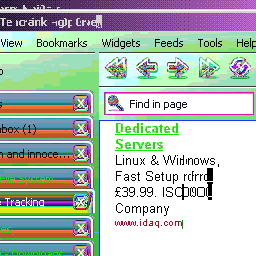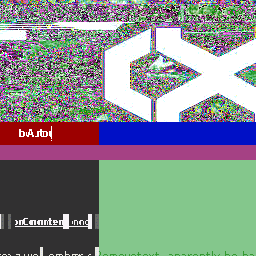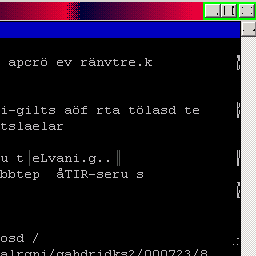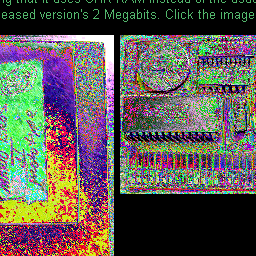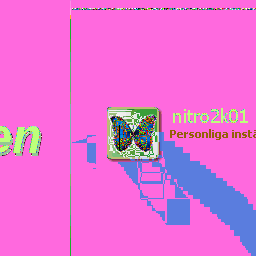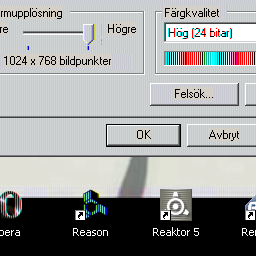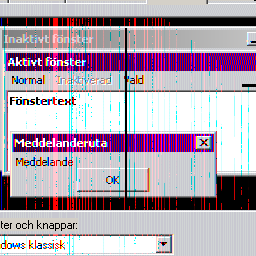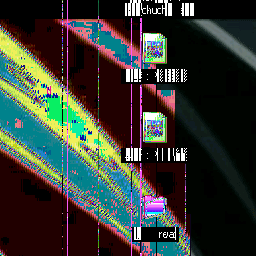Possible fashion trend for 2009: Circuit bent clothes??!?
October 14th, 2008I found this during my random internet excursion:
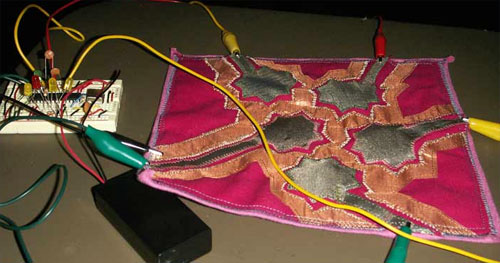
Now what is that? Conductive fabric, which enables you to detect when your hand is near a certain of the fabric. The orange piece of fabric works as a ground plane, and the gold coloured patterns are used to detect capacitance. When you hold your hand near a certain area, the capacitance goes up which can be detected by the microchip on the breadboard.
So, what about using this for wearable circuit bent toys? Just a random thought, and you’d have to make sure the bent toy doesn’t catch fire. Here’s a post on theme wearable audio. (From the exhibition Electroacoustic Sculptures by Benoît Maubrey)
Some other random posts from that blog:
GypsyMIDI controller - And then the wii-mote came along…
Cyberpunk Comic for PSP - Gotta check this one out.
Japanese Cyber Girl - Not from Akiba, but from Nippombashi, where the Osaka otaku hang around!
Or check all their tech art posts or check the front page.
Gameboy Circuit Diagram, GB development wiki/forum and som breaking news
September 20th, 2008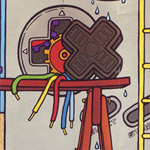
I’m writing this post because every once in a while, people end up here when googling for thing like “Gameboy circuit” or “Gameboy schematic”. This is why this post is placed in the category circuit bending, so that people will find it.
If you googled for that, here’s probably what you’re looking for:
Gameboy DMG schematics
SuperGameboy SGB schematics
A word about that wiki linked above. It’s a Gameboy development wiki that I’m hosting together with a Gameboy development forum. It’s a narrow subject, and the forum it’s typically low traffic. But if you do have questions about Gameboy software development, feel free to drop by the forums and ask.
In other news:
1) The GBC bootstrap is about to be dumped. What is the GBC bootstrap, you may wonder… (If you’re not into low level software development, you’ll likely not understand the following) The bootstrap is the vey first piece of code that runs on any (Z80 type) Gameboy when it boots up. It checks that the header checksumsare correct and displays the Nintendo logo. This tiny piece of code is only 256 bytes big. For you GB developers out there, the bootstrap is the reason why the entry point is $100 and not $0. The reason why this piece of code is interesting is of pure curiosity, and because it’s the last undocumented secret of the Gameboy.
5 years ago, Neviksti managed to dump the bootstrap from the DMG. (The original Gameboy) Read about it here. The news I have today is that the corresponding bootstrap ROM for the GBC is about to be dumped. And in fact it’s not just a 256 byte area located at $0-$FF but to other memory areas sized 512 bytes and 1792 ($700) bytes. These are believed to be storage for the the big “Gameboy” logo shown on CGB’s during bootup and palettes for colorizing monochrome games.
At this point I can’t tell you who’s working on dumping the bootstrap ROMs (At that person’s request) but hopefully I will be able to distribute the contents of the bootstrap ROMs when they have been dumped.
2) The other breaking news is that dwedit and Palmertech, have, at least partially succeeded in booting GBC games on a GB micro by doing a special software trick. At the very least they’ve managed to enter GBC mode. I’m not sure whether they succeeded in actually running GB code after the mode switch, but they’ve managed to make it run the GBC bootstrap. (In principle the same bootstrap as mentioned above) I’ve tried the hack too, ona GBA 1st gen and a GBA SP, and both showed a black screen but played the startup sound. But I’m trying to contact dwedit for more info, and I’ll try to do my own research on the subject, so expect to hear more about it.
For now, check this thread on pH if you’re interested: http://boards.pocketheaven.com/viewtopic.php?p=49041
An actual circuit bent Gameboy (?) and some Lego
June 28th, 2007I’m actively checking my search engine referrers, so I know what people were looking for when they got here. I’ll do also do a more complete post about this, Syd Lexia style.
One of the more popular keywords for people finding their way here, are Gameboy circuit bending. (And related terms) This is what I believe to be the first actual circuit bent Gameboy I’ve come across. (Found by accident on youtube) I’m not totally sure if the guts are actually from a Gameboy though.
This might also be of interest: A bent Casio SK-8 with a breakout box made of a GB case. Done by the pro-bender Kaseo.
And also another little thing I found by accident: A Gameboy built in Lego. (Although it looks like a prop, it looks damn nice)
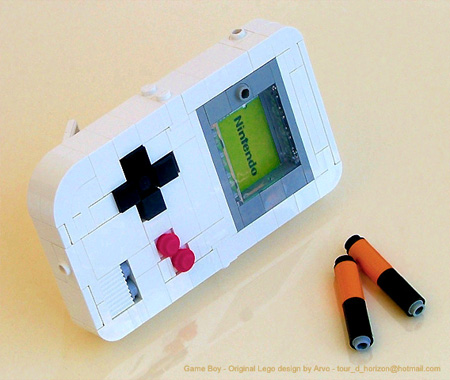
Found at Brickshelf.
Glitched IBM Thinkpad 600E
April 25th, 2007I have a Thinkpad 600E that I inherited from my boss when I worked as a telephone salesperson. (Not my kind of job, btw) I’ve spent some time and money on upgrading and refurbishing it. What was once a 400 MHz PII with 64 MB RAM and a 6 Gb HD is now a 702 MHz PIII with 288 MB RAM and a 80 Gb HD. (Actually overclocked twice, which I did by soldering wires onto SMD components. Tricky work.)
To some people’s standards it may be slow, but it works fine for me.
But something that annoys me is that every 2-3 months or so, the graphics chip goes crazy and totally glitches out. Even after rebooting, the image still gets glitched. The only thing that seems to work is to change the graphics driver, and then change it back.
So getting rid of the glitch mode is easy. However, enterring it is not. I have yet to find out a way to summon the glitch mode. I find some of the things it does to my graphics pretty nice, and I’d like to be able to control it and use it as an image processing effect. (You can take screenshots of the glitches, which indicates that the glitched data is somehow written back to the video memory.)
Glitches happen spontaneously, as well as when moving windows, or even just the mouse pointer. (Which makes it possible to glitchify areas of the screen)
One of the reasons I’m bringing this up now, is because of a recent discussion on the benders yahoo group. (A mailing list for circuit benders) Jeremy of cutthroatfreaksshow had bought an LG Fusic camphone, which had appearantly bent itself. All images were pink-and-white instead of colored. Here are some of them. (Interestingly enough, pink seems to be a key color for my 600E as well)
An even more interesting glitched camera is owned Farrell Eaves. (Read article on LJWorld)
Back to my computer. When in glitch mode, the computer reacts differently depending on the color depth in use. If using a depth of 16 bpp, the glitches are more aggressive, so to speak, and there’s a lot of color burn kind-of effects, and text printed on the screen is heavily affected. When in 24 bpp mode, the glitches are often more subtle. This mode can produce some more subtle dirty effects. These effects remind a little of those used by NiN in their viral marketing campaign, and I find them visually appealing. (One of NiN’s sites)
’nuff said, here are the pictures:
Oh yeah, Limewire? No thank you, it’s probably one of the worst p2p clients I’ve used. Eats memory and CPU, and on top of that it has crap results. It’s just there because I was convinced by a friend to try it.
![You suck at protoshop. No, you [i]really[/i] oo.](http://blog.gg8.se/images/you-suck-at-photoshop-you-really-do-your-awful.png)



